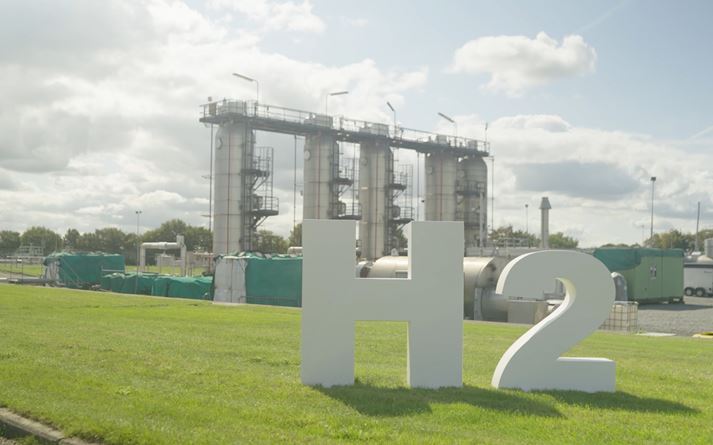Underground hydrogen storage (UHS) emerges as a viable contender, offering substantial-scale, long-term energy storage capabilities. However, a pertinent issue lingers—ensuring the effective recovery of stored hydrogen. In subsurface storage environments, various geochemical reactions may lead to significant hydrogen loss, thwarting the potential effectiveness of UHS systems.
According to recent research, including a detailed study published on February 22, 2025, the integration of advanced geochemical modeling and unsupervised machine learning offers innovative pathways to address these complexities. This study applies non-negative matrix factorization (NMF), a sophisticated machine learning method, to analyze simulated geochemical reactions within hydrogen storage scenarios.
A critical example of the complexities within UHS is the interaction between hydrogen, native brine, and the mineral matrix of the storage formation. One of the key areas of concern is the reduction of pyrite to pyrrhotite under alkaline conditions, releasing hydrogen sulfide (H2S), which compromises the integrity of hydrogen reserves. Experimental investigations reveal that pyrite remains reactive when low acidity and elevated temperatures are present, conditions that are not uncommon in subsurface environments.
While these complexities are acknowledged, the lack of comprehensive understanding around abiotic dissolution and precipitation reactions remains a stumbling block. Despite conflicting reports on the significance of these reactions, the geochemical modeling approach combined with NMF elucidates the intricate interplay of redox processes, mineral transformations, and secondary phase precipitations. This analysis grants researchers a clearer picture of how competing reactions govern hydrogen loss, which is critical for designing effective storage strategies.
Statistical modeling integrated within the study, based on meticulous simulation, reveals that varied geological formations exhibit distinct propensity for hydrogen reactivity. Particularly, individual factors such as salinity, temperature, and hydrogen pressure, modulate the reactivity within reservoirs. The study’s results highlight that geological formations like sedimentary sandstone, salt caverns, and depleted oil fields each offer unique challenges and opportunities regarding hydrogen retention and reactivity.
Moreover, the application of NMF aids researchers in distinguishing nuanced reaction stages, allowing for the identification of elusive reaction fronts and mineral associations that are otherwise indistinguishable to traditional geochemical analyses. These findings are pivotal in advancing theoretical and experimental understanding, ensuring model projections align closely with real-world conditions.
The study it highlights is a step forward in enhancing the interpretability of geochemical reaction pathways within UHS systems by deciphering overlapping reaction profiles through machine learning technologies. Importantly, these insights serve to advance ongoing research and development in the field, pushing the boundaries of what is known about hydrogen storage—the implications of which are crucial as industries pivot towards sustainable energy solutions.
As researchers continue to explore this field, the integration of machine learning with traditional geochemical modeling may pave the way for optimized underground hydrogen storage systems. The potential to not only secure but efficiently retrieve stored hydrogen could redefine how energy behaves in a sustainable future, addressing demands and enabling a smoother energy transition period amid fluctuating environmental conditions and energy consumption patterns.
